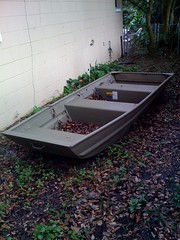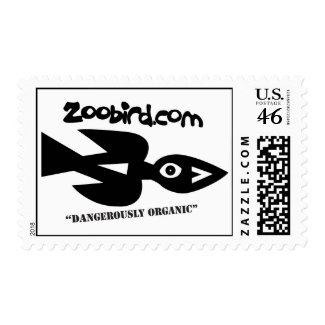Dangerously organic!
I once mentioned to my young niece, Allie, that we were going to a “gum” swamp and her face lit up as though we were headed for the circus. It took me a moment to realize she was visualizing some kind of candy cane forest where honey dripped from the trees. I’ve never felt so reluctant to educate a young mind as I was at that moment. Under my breath I sheepishly muttered that the “gum” in this case was a kind of tree.
In Florida, we have two kinds of trees commonly called gums, sweet gum (Liquidambar styraciflua) and the tupelos (Nyssa sp.). These are unrelated trees that are called “gums” for entirely different reasons.
Sweet gum got its name in the way we might expect, from its sticky sap. Dissect the Latin name, and you reveal a wonderfully poetic tribute to this sap—Liquidambar meaning “liquid amber” and styraciflua, “flowing with storax or aromatic resin.” This sap, called styrax, has been used as a substitute for storax, a perfumy balm extracted from a related Oriental species. In folk medicine styrax has been used for wounds and skin irritations. More recently, a commercial industry was established in Alabama, where the sap was processed for ointments and syrups.
But the gums that adorn our local maps with such enticing names as Gum Root Swamp, Gum Pond and Gum Slough are the tupelos. In our area there are three – swamp tupelo (Nyssa sylvatica), water tupelo (N. aquatica) and Ogeechee tupelo (N. ogeche).
Having grown up in a household steeped in Danish tradition, I am familiar with Nyssa, the small gnomes of Scandinavian folklore that inspired Swedish botanist Carl Linnaeus to give the genus this name. Nyssa are mischievous little people who usually make their appearance around Christmas time. But, here in Florida you can find them any time of year. Just stand in a grove of Ogeechee tupelos and look around at the stout, squat trunks and gnarled, sprawling limbs and you’ll know you’re in the company of gnomes.
Among the most notable animal associates of tupelos are bees. Honey made by bees that have sipped on Ogeechee tupelo blooms is considered by many to be a delicacy. For diabetics, it’s much more. Because of high fructose and low dextrose content, it is the only kind of honey they are able to safely eat.
Bees also use tupelos for housing, often building hives in hollow trunks of swamp tupelo trees. Another name for a beehive is a “gum”, and thus the name"gum" trees. Some bee keepers use a 2 – 3 foot section of fallen, hollow gum tree, with boards on top and bottom, to house their bee gums. Another use for hollowed sections of gum trunks is for a kind of rabbit pen called a “rabbit gum”.
I explained all of this to Allie, but I could tell my words were little more than an annoyance – an unwelcome breeze emanating from my mouth that tickled her ears, without actually entering them. With the selective mode of hearing that is the gift of childhood, only a few choice words actually penetrated her mind. Looking up at me with doe-eyed innocence she whispered hopefully, “So it’s a forest full of honey?!”
In Florida, we have two kinds of trees commonly called gums, sweet gum (Liquidambar styraciflua) and the tupelos (Nyssa sp.). These are unrelated trees that are called “gums” for entirely different reasons.
Sweet gum got its name in the way we might expect, from its sticky sap. Dissect the Latin name, and you reveal a wonderfully poetic tribute to this sap—Liquidambar meaning “liquid amber” and styraciflua, “flowing with storax or aromatic resin.” This sap, called styrax, has been used as a substitute for storax, a perfumy balm extracted from a related Oriental species. In folk medicine styrax has been used for wounds and skin irritations. More recently, a commercial industry was established in Alabama, where the sap was processed for ointments and syrups.
But the gums that adorn our local maps with such enticing names as Gum Root Swamp, Gum Pond and Gum Slough are the tupelos. In our area there are three – swamp tupelo (Nyssa sylvatica), water tupelo (N. aquatica) and Ogeechee tupelo (N. ogeche).
Having grown up in a household steeped in Danish tradition, I am familiar with Nyssa, the small gnomes of Scandinavian folklore that inspired Swedish botanist Carl Linnaeus to give the genus this name. Nyssa are mischievous little people who usually make their appearance around Christmas time. But, here in Florida you can find them any time of year. Just stand in a grove of Ogeechee tupelos and look around at the stout, squat trunks and gnarled, sprawling limbs and you’ll know you’re in the company of gnomes.
Among the most notable animal associates of tupelos are bees. Honey made by bees that have sipped on Ogeechee tupelo blooms is considered by many to be a delicacy. For diabetics, it’s much more. Because of high fructose and low dextrose content, it is the only kind of honey they are able to safely eat.
Bees also use tupelos for housing, often building hives in hollow trunks of swamp tupelo trees. Another name for a beehive is a “gum”, and thus the name"gum" trees. Some bee keepers use a 2 – 3 foot section of fallen, hollow gum tree, with boards on top and bottom, to house their bee gums. Another use for hollowed sections of gum trunks is for a kind of rabbit pen called a “rabbit gum”.
I explained all of this to Allie, but I could tell my words were little more than an annoyance – an unwelcome breeze emanating from my mouth that tickled her ears, without actually entering them. With the selective mode of hearing that is the gift of childhood, only a few choice words actually penetrated her mind. Looking up at me with doe-eyed innocence she whispered hopefully, “So it’s a forest full of honey?!”
Comment
-
Comment by Michael Levin on December 8, 2008 at 9:07am
-
The outdoor life is what keeps me here in Florida. I must say, I've never yet met someone who came to Central Florida for a visit and meant to go to the rivers. That constantly amazes me. We have such a gift here with the natural springs, rivers and coastline. Now, the Rhesus monkeys you mentioned are something I've only vaguely heard of. They're on the list. I bought a kayak from an enthusiast who gave me books and directions and have had a good time exploring. Lars, your story remained with me into the day today.
I am inspired! I just got a Jon boat with an electric trolling motor because my kayak only seats one. I haven't tried it yet, but I'm sure it will open up some new experiences.
Thanks. ...Michael
© 2025 Created by Michael Levin.
Powered by
![]()






You need to be a member of Zoobird to add comments!
Join Zoobird